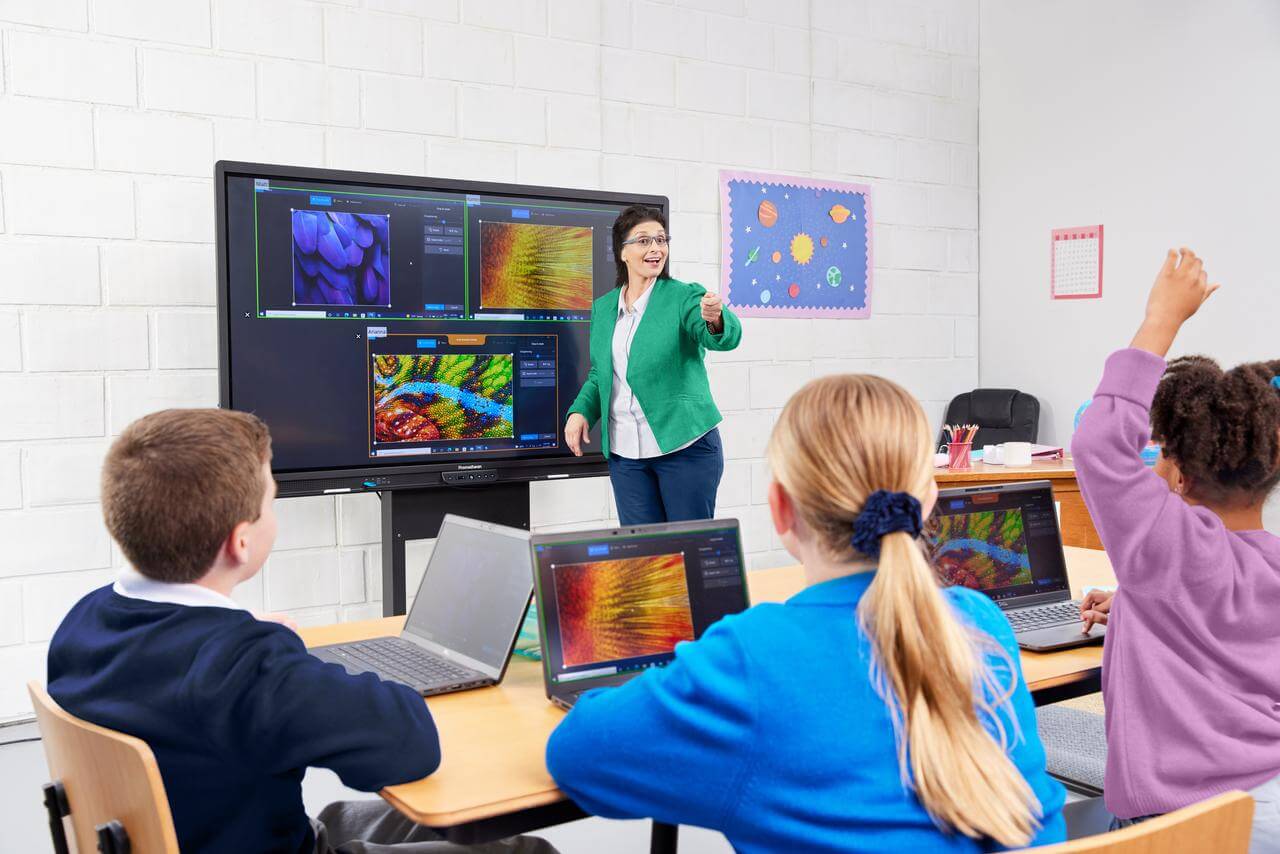Effective Primary Science Tuition Singapore for Better Exam Results
Effective Primary Science Tuition Singapore for Better Exam Results
Blog Article
A Comprehensive Overview to the Various Understanding Methods in Key Science Direction
The expedition of varied learning techniques in key scientific research guideline presents a possibility for educators to improve trainee involvement and understanding considerably. By checking out hands-on learning techniques, inquiry-based techniques, and joint strategies, we can identify effective methods that satisfy different finding out designs. In addition, the assimilation of modern technology and differentiated instruction plays a vital duty in cultivating a comprehensive atmosphere. The question remains: just how can these approaches be successfully carried out in the classroom to maximize their impact? The solution depends on a better examination of each method and its implications for teaching scientific research.

Hands-On Understanding Techniques
Hands-on knowing methods play a crucial duty in primary scientific research guideline, involving pupils in energetic exploration and experimentation. These techniques enable learners to engage straight with products and sensations, cultivating a much deeper understanding of clinical concepts. By utilizing manipulatives, designs, and real-life experiments, instructors develop an environment where students can observe, hypothesize, and check their concepts.
Such strategies not just boost comprehension but likewise grow important reasoning and analytic abilities. When pupils take part in tasks like constructing straightforward machines, planting seeds, or carrying out chemical reactions, they are motivated to ask concerns and seek answers through their own observations. This experiential approach helps to debunk intricate clinical principles, making them much more relatable and obtainable.
Furthermore, hands-on learning promotes collaboration amongst peers, as pupils usually operate in groups to carry out experiments or share findings. This synergy not just enhances their knowing experience but additionally creates necessary social abilities. Eventually, integrating hands-on strategies in main science instruction promotes a long-lasting love of discovering and inquisitiveness regarding the environment, laying a solid structure for future scholastic quests in scientific research and beyond.
Inquiry-Based Discovering
Inquiry-based learning is a training approach that urges trainees to ask concerns, examine sensations, and build their very own understanding of scientific concepts. This approach moves the emphasis from standard teacher-led instruction to a more student-centered experience, where students take the initiative in their educational journey. By cultivating interest, inquiry-based understanding advertises deeper interaction with the material, enabling trainees to discover topics in a meaningful context.
In method, this method commonly includes hands-on experiments, observations, and crucial reasoning tasks that straighten closely with the clinical method. Pupils are urged to formulate theories, layout examinations, and assess information, which grows essential skills such as analytic and logical thinking. The duty of the teacher in this structure is to assist in exploration, directing students through the questions process while motivating independent thought and partnership.
Additionally, inquiry-based learning nurtures a feeling of possession over the knowing procedure, inspiring students to go after understanding proactively. This method not only improves understanding of clinical principles but additionally promotes a lifelong love for knowing, outfitting pupils with the abilities necessary to browse a progressively complex world.
Collaborative Knowing Approaches
Joint learning approaches equip students to participate in significant interactions with peers, promoting a common obligation for their academic end results. In primary science guideline, these methods encourage learners to collaborate to explore scientific concepts, fix troubles, and carry out experiments (primary science tuition Singapore). By taking part in group tasks, students can utilize diverse viewpoints, permitting richer understanding and retention of clinical expertise
One secret aspect of collaborative knowing click here for info is the emphasis on communication abilities. Students have to verbalize their thoughts, listen proactively to others, and negotiate concepts, every one of which are vital expertises in both academic and real-world contexts. This social communication not only improves their understanding of scientific concepts yet likewise advertises teamwork and dispute resolution skills.
When students see the worth of their contributions within a team, they are extra most likely to take ownership of their knowing journey. On the whole, integrating collaborative discovering methods in primary scientific research direction grows a dynamic understanding environment that prepares trainees for future academic and social obstacles.
Technology Integration in Science
The assimilation of modern technology in key scientific research instruction enhances discovering experiences by offering cutting-edge devices and resources that support various mentor approaches, consisting of collective discovering - primary science tuition Singapore. Using digital systems, simulations, and interactive applications enables trainees to involve deeply with scientific ideas, helping website here with an extra hands-on technique to knowing
Online labs, as an example, allow learners to conduct experiments safely and effectively, promoting inquiry-based discovering. These devices can replicate real-world clinical scenarios, allowing trainees to picture complex procedures that would certainly be difficult to replicate in a traditional classroom setup. Innovation promotes communication and cooperation amongst students, as they can share findings and work together on tasks with online platforms.
Additionally, multimedia discussions and academic video clips can enrich lessons by dealing with varied discovering styles, making abstract concepts more accessible. Information evaluation devices likewise empower pupils to gather and analyze scientific information, strengthening critical believing abilities. Generally, the calculated consolidation of innovation in key scientific research direction not only boosts engagement yet likewise prepares pupils for a technically advanced society, furnishing them with essential abilities for future clinical ventures.
Differentiated Instruction Approaches
Differentiated direction approaches are crucial for dealing with the diverse needs of learners in primary science education and learning. These methods enable instructors to customize their training techniques to accommodate differing capabilities, interests, and finding out styles within the class. By using differentiated guideline, instructors can produce a comprehensive setting that fosters interaction and enhances understanding of scientific principles.
One efficient method is to make use of adaptable organizing, which enables pupils to team up with peers at similar ability levels or with differing point of views. This technique motivates peer learning and advertises critical thinking. Additionally, offering choices in jobs can encourage pupils, enabling them to choose jobs that resonate with their interests while still fulfilling curricular goals.
In addition, integrating tiered jobs is one more beneficial method. Deliberately jobs with site here differing levels of complexity, instructors can make sure that all students are suitably challenged, regardless of their effectiveness. Making use of formative analyses to assess comprehending further enables educators to readjust their training methods dynamically, making sure that each learner receives the assistance they require.
Inevitably, carrying out separated direction methods in key science education and learning not only improves student knowing results yet additionally grows an enthusiasm for science, preparing pupils for future academic quests.

Final Thought
In summary, efficient key science guideline demands a diverse method that encompasses hands-on discovering, inquiry-based approaches, and collaborative methods. The integration of modern technology and differentiated guideline further caters to diverse discovering designs, promoting a setting conducive to expedition and essential reasoning.
The expedition of varied learning approaches in main science direction provides a chance for educators to improve pupil engagement and understanding considerably.Hands-on discovering strategies play a pivotal duty in key science instruction, engaging trainees in energetic expedition and trial and error.Inquiry-based learning is an instructional method that encourages trainees to ask questions, check out sensations, and build their very own understanding of scientific ideas.Joint understanding approaches empower students to engage in purposeful interactions with peers, fostering a common obligation for their instructional outcomes. On the whole, including joint understanding approaches in key science direction cultivates a vibrant learning setting that prepares trainees for future academic and social difficulties.
Report this page